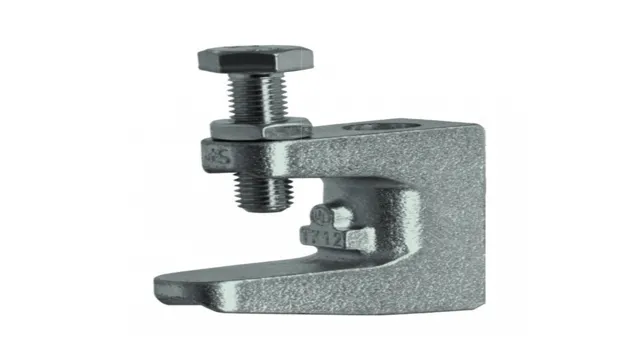How Many Bar Clamps Do I Need for Woodworking Projects: Tips and Tricks

Do you find yourself wondering how many bar clamps you need for your latest DIY project? It can be overwhelming to decide exactly how many of these essential tools to purchase, especially if you’re new to the world of woodworking or home improvement. The answer isn’t one-size-fits-all; the number of bar clamps you need depends on a variety of factors, including the size of your project, the type of wood or materials you’re working with, and your personal preferences. In this blog post, we’ll explore some of these factors and give you some guidelines to help you determine how many bar clamps you need to get the job done right.
Let’s get started!
What Are Bar Clamps?
If you’re wondering how many bar clamps you need for your woodworking project, the answer is, well, it depends. Bar clamps are a versatile tool that can be used for a variety of tasks, such as gluing, clamping, and securing materials in place. The number of bar clamps you need will depend on the size of your project and how many pieces you are working with.
As a rule of thumb, it’s always better to have more clamps than you need, as you never know when you’ll need an extra hand (or clamp). For smaller projects, two to four bar clamps should suffice, but for larger projects, you may need five or more. Keep in mind that bar clamps come in different sizes, so make sure to choose the appropriate size for your project.
Whether you’re a beginner or a seasoned woodworker, having a few bar clamps in your toolkit will always come in handy.
Description of Bar Clamps
Bar clamps are an immensely useful tool in woodworking and metalworking. They consist of a straight bar or pipe that has a fixed jaw at one end and a movable jaw at the other end. The fixed jaw is usually held in place by a screw, while the movable jaw slides along the bar using a clutch mechanism.
This design allows the user to apply pressure by tightening the screw, which brings the two jaws closer together, tightly clamping the workpiece between them. Thanks to their versatility and strength, bar clamps are perfect for a range of applications, from securing boards for cutting or planing to keeping pieces together during sanding, gluing, and other precision work. They come in various lengths, and the best one for you will depend on the size of your project and the space you have available in your workshop.
Whether you’re a professional craftsman or a DIY enthusiast, bar clamps are a must-have tool in any workshop. So, why not grab yourself a set today and experience the endless possibilities they offer?

Considerations for Selecting Bar Clamps
If you’re wondering how many bar clamps you need, there are a few things to consider. First, think about the types of projects you’ll be working on. If you plan on doing a lot of woodworking, you may need more clamps than if you’re just doing occasional repairs around the house.
Another factor is the size of the projects you’ll be working on. If you’re building large pieces of furniture, you’ll need longer clamps to ensure they stay secure. Additionally, pay attention to the quality of the clamps you’re purchasing.
While cheaper options may seem attractive, they may not provide the necessary strength and durability for your projects. Ultimately, it’s best to start with a few versatile clamps and build your collection as needed. By investing in high-quality clamps that meet your specific needs, you’ll be able to tackle any project with confidence.
Project Type and Size
When selecting bar clamps, it’s important to consider the size and type of project you’ll be working on. For smaller projects, a shorter clamp length may suffice, while larger projects may require longer clamps to ensure proper pressure and stability. Additionally, different types of projects may benefit from specific clamp designs, such as parallel clamps for glued-up panels or pipe clamps for irregularly shaped objects.
It’s important to assess the needs of your project and choose clamps that will provide adequate pressure without damaging the materials being worked on. Don’t be afraid to mix and match clamp types and sizes to create a clamp setup that meets the specific needs of your project.
Material Type and Strength
When it comes to selecting bar clamps, one of the most crucial considerations is the material type and strength you will need for the job at hand. Most commonly, bar clamps are made of steel or aluminum and come in various strengths. Steel is usually the stronger of the two, with aluminum being more lightweight.
However, aluminum clamps can often handle lighter duty projects just as well. Additionally, there are also bar clamps available with composite or plastic bodies. While these may not be as durable as steel or aluminum, they can be useful for smaller projects or when a lighter weight clamp is needed.
It’s essential to choose a bar clamp that is sturdy enough to handle the job’s demands while also being light enough for ease of use. Choosing the right material type and strength is key to ensuring you have the right tool for the job.
Available Space
When looking for bar clamps, one important consideration is how much available space you have in your workshop. It’s essential to choose the right size bar clamp that fits your project and the workspace. If you work on smaller projects, a 6-inch bar clamp may be sufficient, while larger pieces may need larger clamps.
If you don’t have a lot of space, consider getting a bar clamp with a sliding jaw that can be adjusted to fit different sized pieces, saving you the need to buy multiple clamps. Don’t forget to take into account the thickness of the material you will be clamping, as well as any obstacles that may affect the clamp’s use. By carefully considering the available space and the size and functionality of the bar clamp, you can find one that will work best for you and your projects.
Calculating Bar Clamp Requirements
If you’re wondering how many bar clamps you need for your project, there are some factors you need to consider. First, think about the size and type of materials you’ll be clamping together. If you’re working with small pieces, you may only need a few clamps.
However, larger or thicker materials will require more clamps to maintain pressure and ensure a secure bond. Additionally, if you’re working on multiple components at once, you may need more clamps to hold everything in place. It’s always better to have extra clamps on hand in case of unexpected issues or if you need to clamp multiple pieces at once.
So, it’s safe to say that the number of bar clamps you need varies depending on your project’s specifications, but having a few extra on hand never hurts.
Clamp to Wood Ratio
When it comes to clamping wood, it’s important to consider the clamp to wood ratio. This ratio refers to the amount of pressure that the clamp can exert on the wood. The general rule of thumb is that you need at least one clamp for every foot of wood that you’re working with.
So, if you’re clamping a 6 foot piece of wood, you’ll need at least 6 clamps. However, there are some other factors to consider as well. For example, if the wood is particularly thick or heavy, you may need to increase the number of clamps that you’re using.
Additionally, if the wood has a lot of knots or other imperfections, you may need to use more clamps to ensure that everything stays in place. At the end of the day, it’s always better to err on the side of caution and use more clamps than you think you need. This will help ensure that your project is secure and that everything stays in place as you work on it.
Number of Total Pieces
When it comes to woodworking, ensuring your bar clamps are appropriately sized and numerous enough to apply the right amount of pressure is essential for success. To determine the number of total pieces required for your project, you must first understand the number of pressure points needed. Each pressure point requires a single clamp, while multiple pressure points may require multiple clamps.
To calculate the total number of clamps required, determine the number of separate pressure points and add up the total amount of force needed. Then, divide that number by the maximum clamping force of your bar clamps. The resulting number will give you the total number of bar clamps required for the job.
Keep in mind that it’s always better to have too many clamps than too few, ensuring your project is secure and stable throughout the entire process.
Overlap
When it comes to woodworking, bar clamps are an essential tool for ensuring precision and stability during glue-ups. But have you ever wondered how to calculate the number of clamps you need for a particular project? One important factor to consider is overlap – the amount of surface area that is covered by the clamp jaw. The greater the overlap, the more pressure is distributed across the joint.
To determine the required number of clamps, you’ll need to factor in the length of your project, the width of your boards, and the amount of overlap you want to achieve. As a rule of thumb, aim for at least one clamp per 12 inches of board length, with additional clamps added as needed for wider boards or greater overlap. By taking the time to calculate your clamp requirements, you’ll ensure a strong and seamless final product.
Additional Clamps for Projects with Multiple Components
When embarking on a project that involves multiple components, it’s important to calculate your bar clamp requirements to ensure you have enough clamps to get the job done efficiently and effectively. The number of clamps required will depend on the number of components you need to hold together and the length of the clamps you use. One way to calculate your clamp needs is to measure the length of the components being held together and then divide that length by the opening size of your clamps.
This will give you an estimate of the number of clamps you will require. One of the main benefits of using multiple clamps on a project is that it helps to distribute pressure more evenly, reducing the risk of misalignment or damage to the components. So, whether you’re working on a small DIY project or a more significant construction project, ensuring you have enough clamps will go a long way in ensuring the success of your endeavor.
Conclusion
In conclusion, the number of bar clamps you need depends on the size and complexity of your project. If you’re building a small coffee table, a few clamps will suffice. However, if you’re tackling a large dining room table, you’ll need more than a handful.
As a general rule of thumb, it’s always better to have more clamps than you think you’ll need, just in case. After all, you never know when a clever and witty clamp pun will come in handy.”
FAQs
What size bar clamps should I use for my project?
The size of the bar clamps you need will depend on the size of your project. It’s best to have a variety of sizes on hand so you can choose the best fit.
Can I use pipe clamps instead of bar clamps?
Yes, pipe clamps can be used as an alternative to bar clamps. However, they may not provide as much clamping pressure and may be more difficult to adjust.
How do I determine how many bar clamps I need for my project?
The number of bar clamps you need will depend on the size and complexity of your project. As a general rule, it’s best to have at least two clamps per joint.
Can I use one long bar clamp instead of multiple smaller ones?
While it is possible to use one long bar clamp for certain projects, it may not provide sufficient pressure or even clamping across the entire project surface. It’s usually better to use multiple smaller clamps.
How tight should I make the bar clamp?
The amount of pressure you apply with the bar clamp will depend on the type of wood you’re working with and the size of the project. As a general rule, apply enough pressure for a snug fit without causing the wood to warp or split.
Can I use bar clamps for metalworking projects?
Yes, bar clamps can be used for metalworking projects as long as the clamp is able to grip the metal securely.
Should I buy bar clamps with a trigger release or a screw release?
The choice between a trigger release or screw release will depend on personal preference. Both types of clamps work well, but a screw release clamp may offer more precise pressure control.



